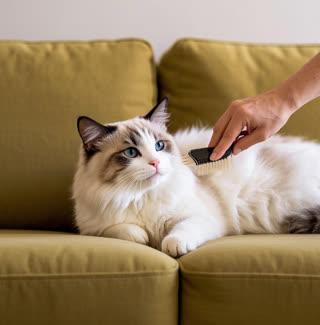As a responsible cat owner, understanding the risks of interrupting cat mating is crucial for your pets’ well-being. While it might seem tempting to separate mating cats to prevent unwanted litters, this abrupt action can lead to severe physical and emotional harm. In this article, we’ll explore the five dangerous consequences of interfering with feline mating behavior and provide expert-backed solutions to manage cat reproduction responsibly.
1. Psychological Trauma and Behavioral Issues
Cats form strong social bonds, especially when raised together from kittenhood. Separating bonded cats during mating can trigger intense stress, anxiety, and depression. According to veterinary behaviorists, sudden separation mimics the loss of a family member, leading to withdrawal, aggression, or excessive vocalization. For example, a study by the Seniors Guide revealed that cats separated after living together for months may exhibit signs of grief, such as refusing food or avoiding interaction.
Why Mating Interruption Exacerbates Stress
During mating, cats release pheromones and engage in ritualistic behaviors that reinforce their social hierarchy. Interrupting this process disrupts their natural communication, leaving them confused and vulnerable. This stress can manifest as spraying, scratching furniture, or even self-harm.
During mating, cats release pheromones and engage in ritualistic behaviors that reinforce their social hierarchy. Interrupting this process disrupts their natural communication, leaving them confused and vulnerable. This stress can manifest as spraying, scratching furniture, or even self-harm.
2. Physical Injury and Health Risks
Attempting to separate mating cats physically poses immediate dangers. Male cats, driven by instinct, may bite or scratch to protect their territory, while females in heat can become unpredictable. Additionally, mating involves specific postures that, if interrupted abruptly, could lead to muscle strains or joint injuries.
Disease Transmission Risks
Uncontrolled mating also increases the likelihood of spreading sexually transmitted infections, such as feline leukemia or herpesvirus. Separating cats mid-mating doesn’t eliminate the risk—once contact occurs, diseases can transfer rapidly.
Uncontrolled mating also increases the likelihood of spreading sexually transmitted infections, such as feline leukemia or herpesvirus. Separating cats mid-mating doesn’t eliminate the risk—once contact occurs, diseases can transfer rapidly.
3. Hormonal Imbalances and Reproductive Complications
Interrupting mating can disrupt a female cat’s estrus cycle, leading to hormonal imbalances. Female cats are induced ovulators, meaning mating triggers egg release. If interrupted, they may experience prolonged heat cycles, increasing the risk of uterine infections or ovarian cysts. Male cats, denied the opportunity to mate, may develop testicular issues or redirected aggression.
The Dangers of Hormonal Birth Control
While some owners turn to contraceptive injections like Depo-Provera, these carry risks such as mammary tumors or diabetes. The safest long-term solution remains spaying and neutering.
While some owners turn to contraceptive injections like Depo-Provera, these carry risks such as mammary tumors or diabetes. The safest long-term solution remains spaying and neutering.
4. Unintended Litters and Overpopulation
Separating cats temporarily doesn’t address the root cause of overpopulation. A single female cat can produce up to 20,000 descendants in five years, according to the Cats Protection League. Even brief access to mates can result in pregnancies, overwhelming shelters and contributing to homeless cat populations.
5. Eroded Trust and Human-Cat Bond
Cats rely on consistency in their environment. Interrupting mating can erode their trust in you, leading to fear or avoidance. This breakdown in the human-cat bond complicates future interactions and may require professional behavior therapy to repair.
Responsible Solutions to Prevent Unwanted Mating
Instead of separating mating cats, focus on proactive strategies:
Spay/Neuter Early: The most effective method. Kittens can be neutered as early as 10–12 weeks.
Quarantine Intact Cats: Keep males and females separate until surgery, especially during heat cycles.
Control Environmental Triggers: Limit artificial light to delay puberty in female kittens.
Choose Same-Gender Companions: Adopt two males or two females to avoid mating risks.
Conclusion
Interrupting cat mating to separate mating cats may seem like a quick fix, but the consequences—from psychological trauma to health crises—are far-reaching. Prioritize spaying/neutering and proactive management to ensure your cats thrive physically and emotionally. By understanding the risks of interrupting cat mating, you can build a safer, happier home for your feline family.
Remember: A little prevention goes a long way in protecting your cats and reducing the strain on animal welfare systems.










